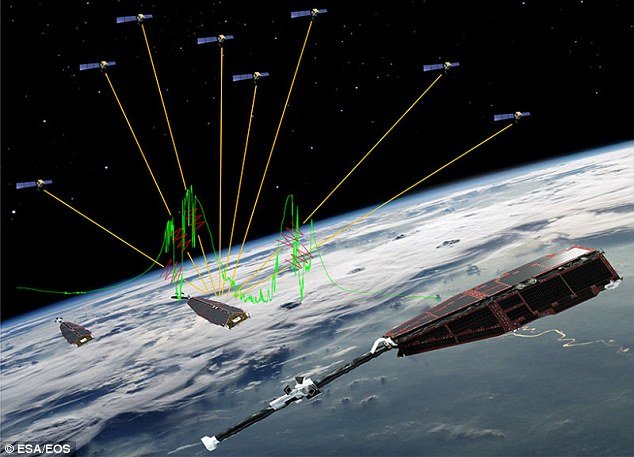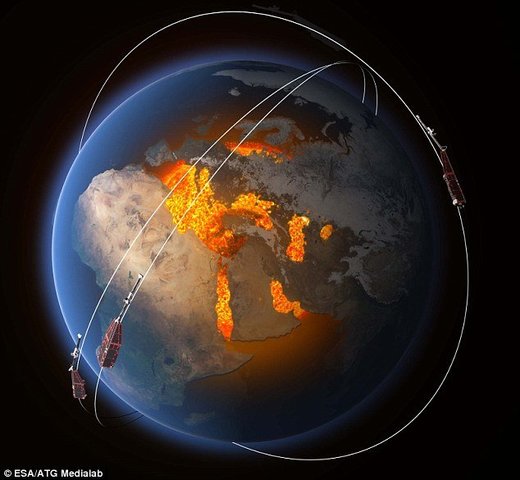
Scientists were left puzzled about why the three satellites launched by the European Space Agency have regularly lost their navigation signal when passing over the equator above the Atlantic Ocean. Now they believe they may have uncovered the underlying cause of the strange loss in the GPS signal that helps control the satellites - thunderstorms high in the ionosphere.
Professor Claudia Stolle, from the German Research Centre for Geosciences in Postdam, Germany, said the storms can cause the signal to the Swarm satellites to vanish for several minutes at a time. She said: 'These ionospheric thunderstorms are well known, but it's only now we have been able to show a direct link between them and the loss of the GPS.' ... 'This is possible because the Swarm satellites provide high resolution observations of both phenomena at one spacecraft.'
The Swarm constellation was designed to monitor the magnetic field that envelopes the Earth and to look for electric currents in the planet's atmosphere. They were launched in November 2013 with two of the satellites being sent to orbit side-by-side at an altitude of 285 miles and a third orbiting at 329 miles.
The satellites use GPS signals to help determine their precise position and timing as they orbit. Yet as the satellites passed over the equator between Africa and South America they seemed to lose the GPS signal for several minutes. GPS is provided by a suite of 24 satellites orbiting some 12,550 miles above the surface. They provide the signal that is used by satellite navigation systems, mobile phones, aircraft and many other devices here on Earth.

Ionospheric thunderstorms occur as turbulence in these clouds of electrons which create small 'bubbles' inside which there is little electrically charged material. These bubbles bend and scatter electromagnetic waves sent by GPS satellites 12,000 miles away, meaning the Swarm satellites are unable to pick up the signal.
Professor Stolle said the discovery promised to reveal new details about the electrical activity in the ionosphere and also learn more about how solar activity affects the Earth's atmosphere. 'It's important to understand these external sources to get a complete picture of the Earth magnetic field,' she said. 'This study looks at one of these factors.'
The findings could also help to improve the reliability of GPS systems in the future. Professor Stolle added: 'The GPS has become a very convenient scientific tool for us in addition to being a navigation and positioning instrument for the satellite.'



No, it's Ned and he's turned up the transmit power on his C.B radio again.